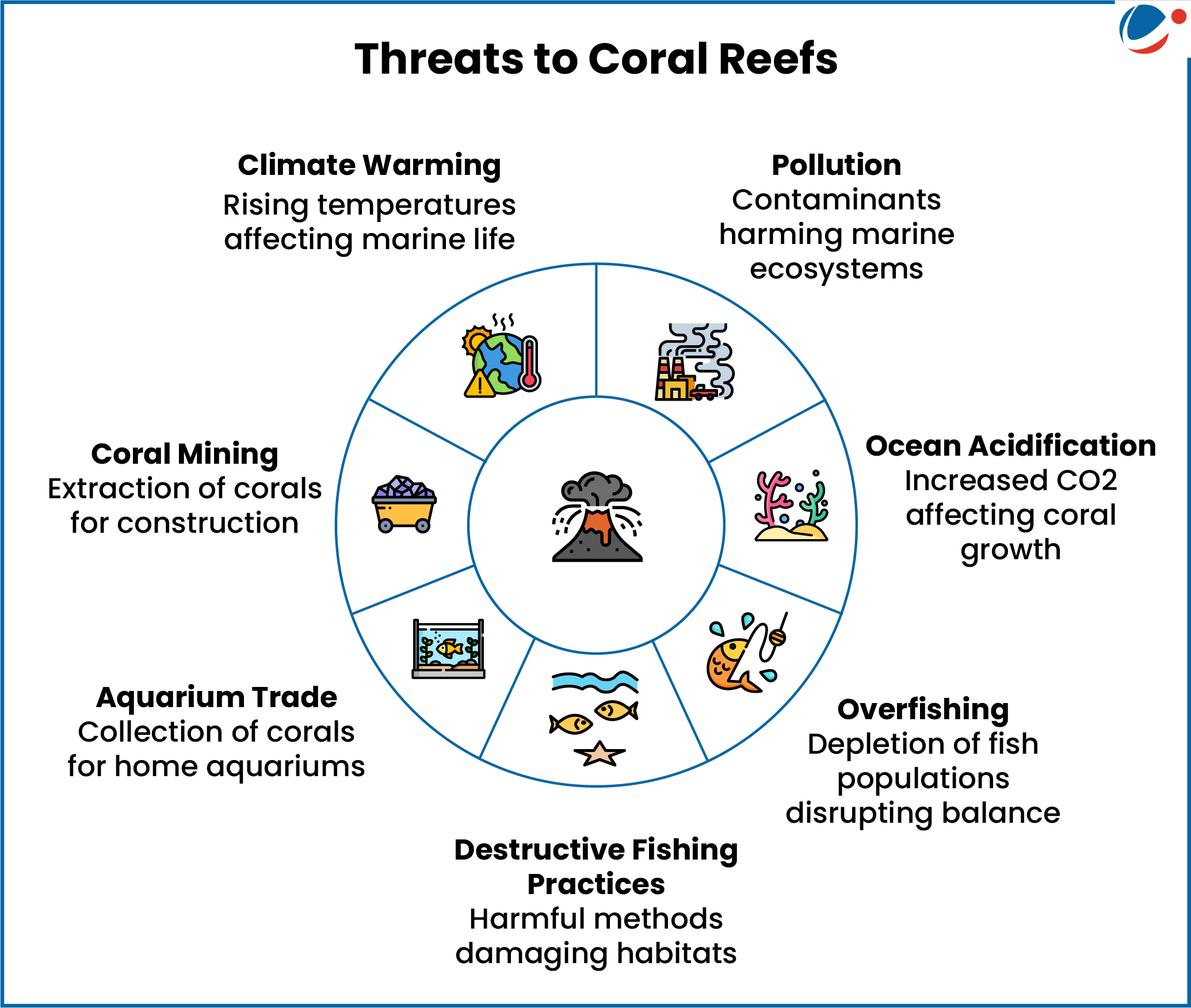
This groundbreaking advancement in coral conservation and restoration is a collaborative effort led by Australian researchers.
About Cryo-born coral
- Cryo-born corals: They are created using cryopreservation techniques, which involve freezing coral cells and tissues at very low temperatures.
- Cryopreservation Process:
- Coral cells and tissues contain water, which forms damaging ice crystals when frozen.
- Cryopreservation uses cryoprotectants to remove water from cells during freezing & Support cell structures when thawed.
Significance of the Breakthrough
- Climate Change Resilience: The project aims to deploy millions of heat-tolerant corals onto the reef annually to combat the effects of climate change.
- Selective Breeding:
- Cryopreservation allows researchers to bypass the limitations of natural coral spawning, which occurs only once a year.
- It enables selective breeding and the use of colonies for reproduction multiple times.
About Coral Reefs
- Corals are invertebrates from the class Anthozoa, phylum Cnidaria.
- They form reefs through colonies of polyps that secrete limestone skeletons and rely on symbiotic algae (zooxanthellae) for nutrition..
- Distribution: Mainly found in shallow, sunlit waters between 30°N and 30°S latitude, with a preferred temperature range of 16-32°C.
- Depth: They typically grow at depths less than 50 meters, where light levels are high.
Other Conservation Measures:
|







